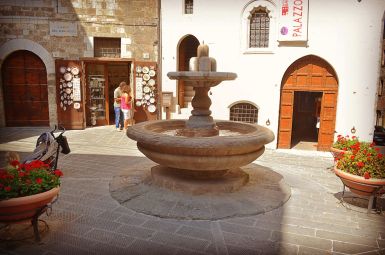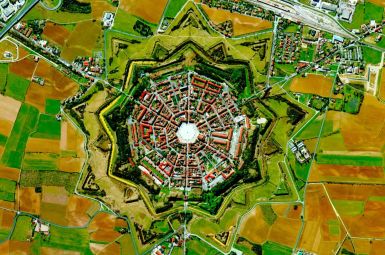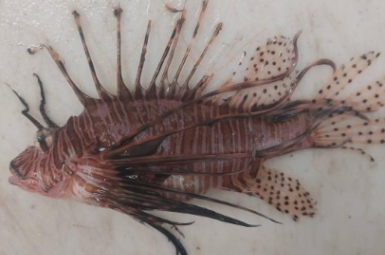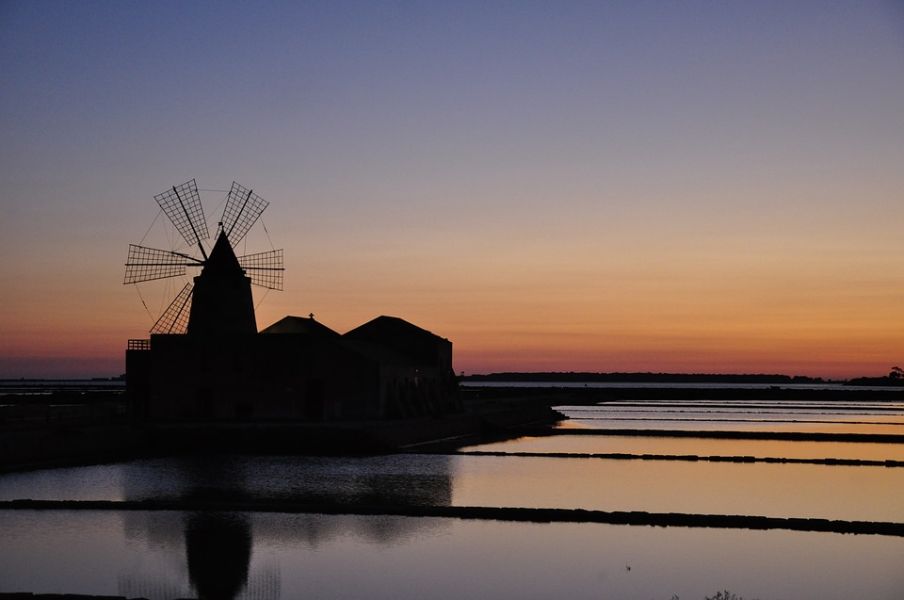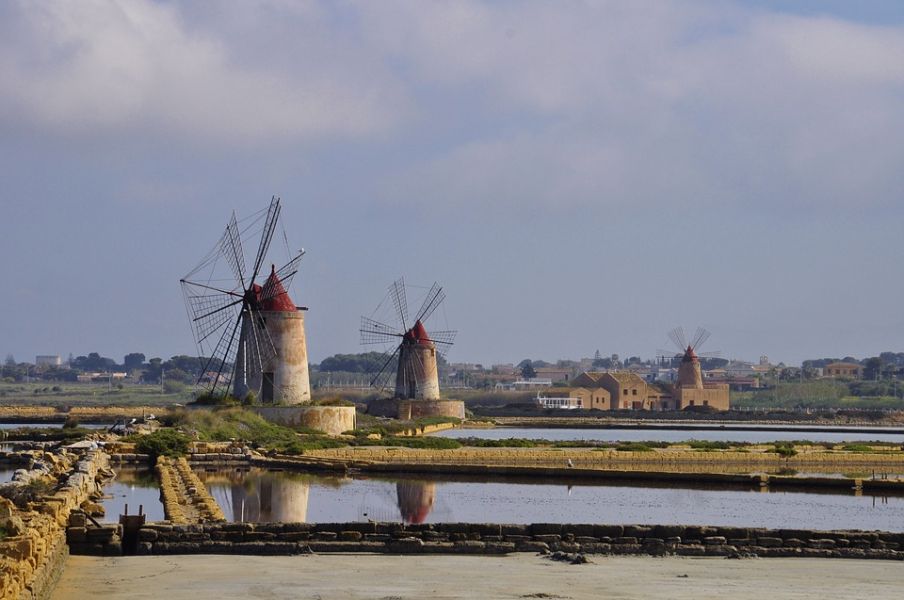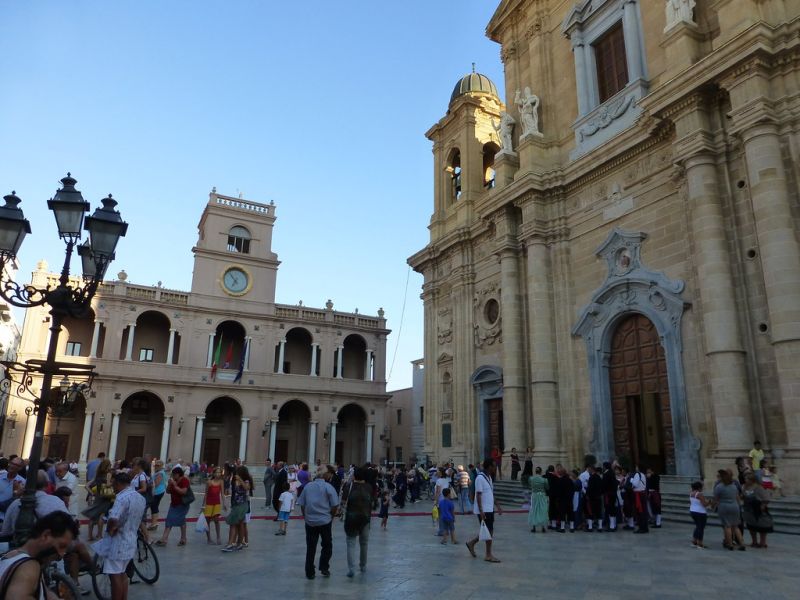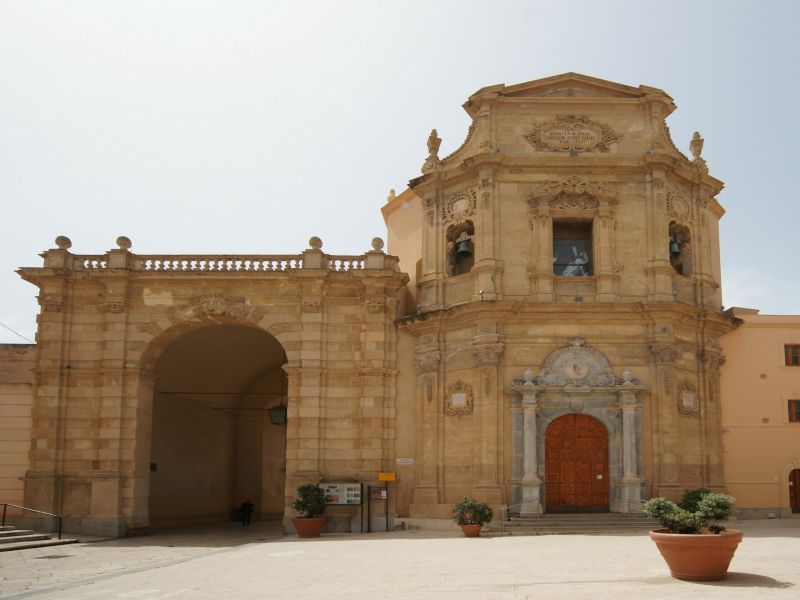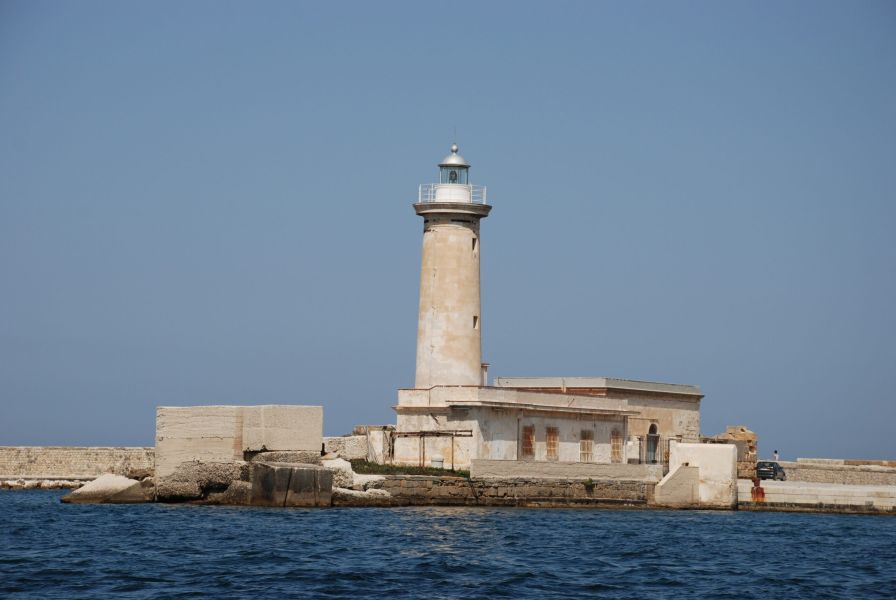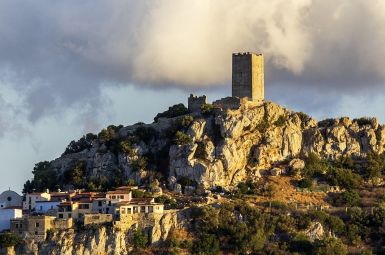
Il Borgo di Marsala
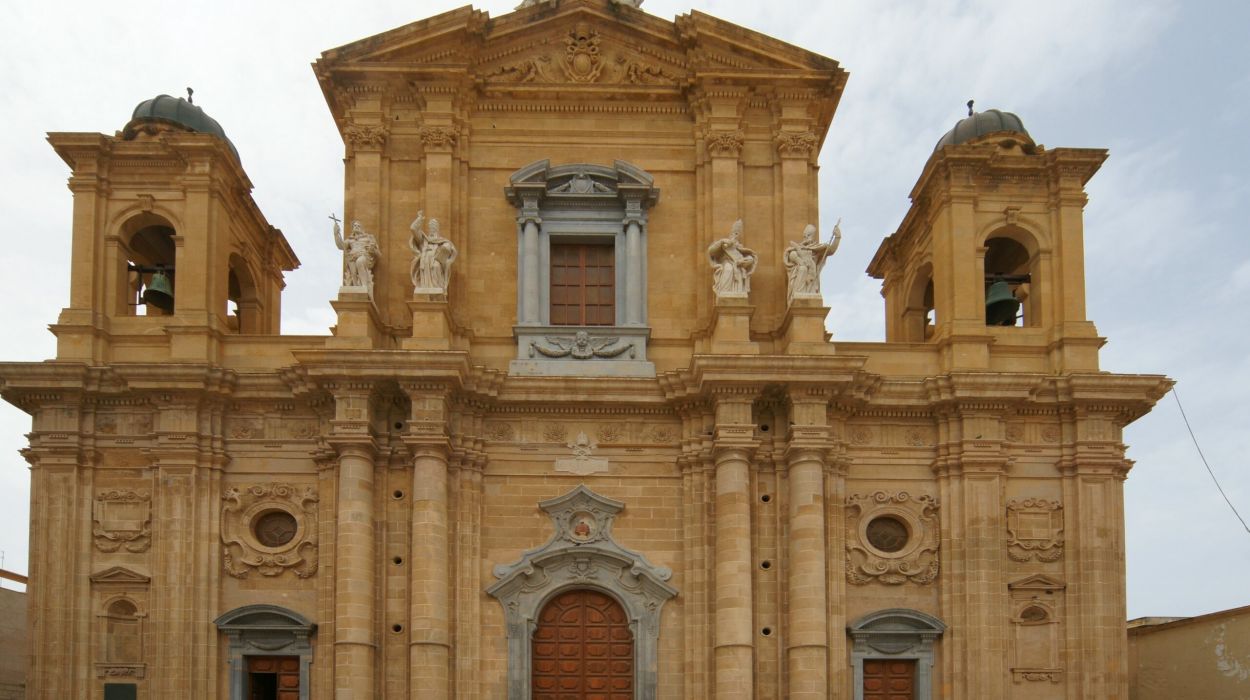
Il Borgo d’Italia
tutto da scoprire ed esplorare
Monumenti
La storia
Non si hanno notizie certe sui primi insediamenti umani nel territorio vicino a Marsala, ma le testimonianze storiche più antiche che sono state ritrovate risalgono al Paleolitico Inferiore.
L’unica certezza nel quadro storico di questo borgo è che la prima zona ad essersi sviluppata è Mothia, una colonia cartaginese sorta sull’odierna isola di San Pantaleo, una delle quattro presenti nella palude dello Stagnone.
Mothia era uno degli snodi cruciali per i traffici commerciali di Cartagine: cresceva tanto quanto cresceva Cartagine.
Ben presto la potenza di quest’isoletta si scontrò con il desiderio di supremazia della Magna Grecia, che spadroneggiava in Sicilia. Il personale nemico di Mothia era incarnato dalla persona di Dioniso il Vecchio, tiranno di Siracusa, che aspirava a sottomettere l’intera Sicilia. Per questo nel 397 a.C. distrusse Mothia e costrinse i suoi abitanti a trasferirsi sulla terraferma. Su un promontorio sulla costa i rifugiati fondarono Lylibeo, “la città che guarda alla Libia”, quando per Libia s’intendeva l’intera costa occidentale dell’Africa.
Quando nel 264 a.C iniziò la prima guerra punica tra Cartaginesi e Romani, gli scontri avvennero nelle acque vicino Lylibeo, che nonostante questo riuscì a mantenere la sua autonomia per più di un decennio. Solo quattordici anni dopo l’inizio della guerra i Romani con il loro esercito riuscirono ad avvicinarsi alla città fenicia, ma i fondali troppo bassi e la fortificazione dell’insediamento ostacolarono le operazioni di conquista e ci vollero ben dieci anni prima che potessero sottometterla.
Come municipio romano Lylibeo ha goduto di grandi onori ma il suo destino si è strettamente legato alle sorti dell’impero e quando questo è caduto anche Lylibeo ha attraversato un periodo di decadenza e nel IV secolo è stata più volte invasa e distrutta dai Vandali.
È tornata di nuovo a fiorire con la venuta degli arabi che le hanno cambiato il nome, trasformandolo in Marsah Alì (porto di Alì) o Marsah Allah (porto di Dio). In questo periodo la città si abbellì e vennero costruiti numerosi edifici, che purtroppo oggi non sono più in piedi. Nonostante siano passati diversi secoli la presenza araba si sente ancora oggi a Marsala: si avverte in alcune parole dialettali e in alcuni piatti tipici del borgo, come il cous cous.
Terminato il periodo arabo, Marsala ha seguito la storia dell’intero meridione e sul suo territorio si sono insediati Normanni, Svevi, Angioini e Aragonesi, proprio questi ultimi portando la città ad una nuova decadenza.
La grande ripresa di Marsala riparte nel ‘Settecento, quando l’inglese John Woodhouse s’innamora del vino che viene prodotto in questa zona e studia un metodo che lo renda commerciabile. In poco tempo il vino Marsala viene esportato in tutto il mondo, portando ad una grande ripresa dell’economia locale.
L’11 maggio 1860 Marsala entra nella storia d’Italia, perché sulle sue coste approda Giuseppe Garibaldi e il suo seguito di mille uomini, con l’obiettivo di unificare l’intera penisola sotto un unico re.
Alcuni decenni più tardi, sempre l’11 maggio ma del 1943 la seconda guerra mondiale travolge Marsala che viene bombardata dagli alleati. La prima pagina del New York Times per l’occasione titolò ‘Marsala Wiped Off the Map’ – Marsala è stata cancellata dalle mappe.
Oggi Marsala porta ancora i segni dei bombardamenti subiti, ma non impediscono a chi la visita di godere del suo bellissimo centro storico che regala sempre suggestive emozioni.
Mothia
Mothia è stata un’antica e gloriosa città fenicia distrutta nel 397 a.C dal tiranno di Siracusa Dionisio il Vecchio.
Nell’XI secolo i Normanni donarono l’isola all’abazia di Santa Maria della Grotta di Marsala e per questo s’insediarono qui i monaci Basiliani di Palermo, che diedero all’isola il nome di San Pantaleo, fondatore del loro ordine.
Tra il ‘Settecento e l’Ottocento sono stati avviati episodici scavi archeologici, che hanno avuto concretezza solo agli inizi del ‘Novecento, quando l’isola è stata acquistata da Joseph Whitaker, discendente di John Woodhouse. Nel 1906 venne avviata una campagna di scavo che portò alla luce il santuario di Cappidduzzu, la necropoli, la Casa dei mosaici, la casermetta, l’area del tofet e le due porte d’accesso di Nord e Sud.
L’isola è immersa in una fitta macchia mediterranea, per raggiungerla oggi è necessario imbarcarsi su un peschereccio ma fino al 1971 con i carretti guidati da cavalli si poteva percorrere una strada lastricata sommersa, di cui ancora s’intravedono i cippi sul pelo dell’acqua.
Tra tutte le testimonianze di Mothia ritrovate nel corso dei secoli quella che ancora oggi incuriosisce ed attira di più è la statua del ‘giovinetto di Mothia’, ritrovata quasi per caso nel 1979. Si tratta di una statua a tutto tondo che raffigura un giovane dal portamento fiero e orgoglioso e che è tutt’ora avvolta nella nebbia del mistero. La statua è di origine greca, come si può vedere dalla fattura e dall’abito che il giovane indossa, ma cosa ci faceva una statua greca in una provincia punica? Secondo la maggior parte degli studiosi quest’opera è stata trafugata durante l’assalto a Selicunte, che allora rientrava nella Magna Grecia. Probabilmente raffigura un atleta vittorioso, che indossa un vestito dal tessuto sottile attraverso le cui pieghe s’intravedono i dettagli del corpo del giovane. L’ottima manifattura e i dettagli ben definiti lasciano presupporre che la statua sia stata realizzata per essere esposta in un contesto di grande rilevanza, probabilmente una piazza o un tempio.
Per tutelare il patrimonio storico e archeologico di Mothia nel 1971 è stata istituita la ‘Fondazione Whitaker’ e la casa dello storico inglese oggi è il museo che custodisce tutti i ritrovamenti di Mothia e della necropoli ritrovata vicino Marsala.
Il Duomo di Marsala
Il duomo di Marsala è una chiesa che come uno specchio riflette il carattere composito ed elegante della città. È stato costruito nel 1176, al tempo in cui la città era stata distrutta dalle incursioni barbariche, e venne innalzata al rango di Arcipretura dal marchese Tutino.
La chiesa venne dedicata a San Thomas Becket, santificato solo tre anni prima ma già per tutti simbolo di libertà e dignità, oltre che di fedeltà alla chiesa e a Cristo.
Come spesso accade la presenza di un culto si lega ad una leggenda medievale: si racconta che un giorno attraccò al porto di Marsala una nave giunta nelle acque siciliane a causa del mare eccessivamente mosso. La nave trasportava due colonne corinzie che dovevano essere usate per costruire una chiesa dedicata a Thomas Becket. Il popolo pensò di trovarsi davanti ad un segno divino e decise di utilizzare le colonne per edificare una chiesa da dedicare proprio al santo inglese.
Una storia ricca del fascino delle credenze popolari medievali che s’intreccia con la storia di Giovanna d’Inghilterra che costruì in Sicilia numerose chiese dedicate a San Thomas Becket, con lo scopo di espiare le colpe del padre, Enrico II, accusato di aver commissionato l’omicidio del vescovo di Canterbury.
Il duomo di Marsala sorge sui resti di una basilica paleocristiana, per questo ancora oggi ha mantenuto l’assetto basilicale. Nel corso dei secoli il suo aspetto è cambiato più volte, a causa dei tanti restauri e rifacimenti. Oggi la facciata principale apre il suo ingresso su Piazza Venezia, la piazza centrale di Marsala. Il prospetto è contraddistinto da un barocco raffinato ed austero ed è chiaramente diviso in due parti: la parte inferiore in stile barocco e la parte superiore con il campanile in barocchetto, costruiti un secolo dopo dall’inizio dei lavori.
L’interno è a tre navate, delineate da due serie di colonne, che mantengono uno stile tipico dell’architettura normanna. Lungo le pareti delle navate laterali si susseguono dodici cappelle, in cui sono presenti alcuni decori in stile barocco. Nel transetto si trova una tela che raffigura la Madonna del popolo, opera del 1490 di Domenico Gagini e un’altra che rappresenta La purificazione della Vergine, realizzata da Antonello Riccio.
Alla chiesa madre di Marsala è stata dedicata anche una bellissima poesia, che termina con i versi
‘Madre Chiesa
Sei l’alfa e l’omega.’
L’inizio e la fine, il centro di tutto, questo rappresenta il duomo di Marsala per il suo popolo.
Porta Garibaldi
L’11 maggio 1860 Giuseppe Garibaldi e il suo esercito composto da mille volontari approdarono nel porto di Marsala ed entrarono in città attraversando quella che allora si chiamava Porta del Mare.
Porta Garibaldi, insieme a Porta Nuova, Porta Mazara e Porticella, era uno dei quattro ingressi cittadini. Questa porta è conosciuta come la più nobile e la più elegante, contraddistinta dalla presenza di una cupola, di una balaustra e di colonne. Sotto al cornicione si trova una scritta in cui viene affidato a Dio l’ingresso e l’uscita della città, sulla balaustra invece si trova un’aquila coronata che rappresenta lo stemma della casata spagnola degli Asburgo.
Dopo l’Unità d’Italia la porta è stata intitolata a Giuseppe Garibaldi, per ricordare l’impresa garibaldina.
L’arcipelago delle Egadi
Le isole Egadi si affacciano sulle coste tra Trapani e Marsala, sono isole ricche di storie e suggestive leggende. L’arcipelago è composto da tre isole principali: Favignana, Levanzo e Marettimo e da due isolotti più piccoli e disabitati: Formica e Maraone.
Racconta la leggenda che il dio greco Helios, mandava il suo gregge a pascolare sull’isola di Trinacria, sotto la sorveglianza delle sue figlie Fauetusa e Lampatia, nate dall’unione con Nereea. L’antico nome delle tre isole Egadi deriverebbero dai nomi delle due figlie di Helios e di Nereea: Auegusa- Favignana, Pharbantia-Levanzo, Hiera- Marettimo.
Anche la piccola isola di Formica intreccia il suo nome ad una storia curiosa, infatti si racconta che l’isola sia stata invasa da formiche che hanno ricoperto tutti i suoi scogli.
Le isole Egadi sono un autentico spettacolo, adatte a chi cerca una vacanza all’insegna della tranquillità e della natura più vera.
L’arcipelago delle Egadi è abitato soprattutto da comunità di pescatori, sull’ìsola di Favignana e Formica sono stati costruite due tonnare.
Le isole Egadi mantengono immutato un fascino unico, perché non sono state trasformate dalla mano dell’uomo.
Curiosità
Sua Maestà il vino Marsala
La produzione di vino a Marsala affonda le sue origini nell’antichità più remota e questo è dimostrato dal ritrovamento a Mothia di vasi vinari risalenti al VII-VI secolo a.C.
Non si sa con certezza chi abbia introdotto la coltivazione della vite in queste zone, ma le ipotesi più accreditate sostengono che siano stati i Greci che poi hanno tramandato le proprie conoscenze ai Romani.
Tra il XV e il XI secolo, quando giunsero i Cretesi e poi i Fenici, s’iniziò a distinguere le diverse varietà di viti ma sono stati i Greci ad introdurre nuove tecniche di coltivazione e produzione da cui si poterono ricavare vini aromatici e corposi, antenati del Marsala.
La fortuna di questo vino giunse dal mare e porta un nome inglese: John Woodhouse. Quest’uomo s’innamoro del vino locale che i contadini producevano con una tecnica definita ‘in perpetuum’, cioè riempiendo con vino nuove le botti che si erano quasi esaurite, mantenendo così inalterati i livelli. Questa tecnica però portava anche ad avere una gradazione molto alta che rendeva il vino difficile da trasportare, Woodhouse decise allora di provare ad utilizzare alcool di buona gradazione, per cercare di dare stabilità al prodotto. L’esperimento riuscì in pieno e l’uomo iniziò l’esportazione di questo vino, che ebbe uno straordinario successo, tanto da vantare clienti importanti come l’ammiraglio Nelson e la sua flotta.
Con i proventi del Marsala Woodhouse ha vivacizzato notevolmente l’economia locale e ha avviato la costruzione d’infrastrutture che hanno arricchito il borgo siciliano.
Personaggi
Nino de Vita
Nino de Vita è nato a Marsala l’8 giugno del 1950. Attualmente è considerata una delle voci più importanti della letteratura contemporanea italiana.
È un autore che scrive poesie in dialetto siciliano, ma riesce comunque a toccare gli animi di tutti. I suoi versi sono insieme antichi e moderni, ruotano attorno ai temi cari all’esistenza umana, affrontati senza alcuna retorica.
Nino de Vita esordisce nel 1984 con la raccolta di poesie ‘Fosse Chiti’, che è anche la sua opera più conosciuta.
Oltre ad essere un poeta è anche uno scrittore per ragazzi e dal 2006 al 2011 ha pubblicato tre libri illustrati.
Nel 1996 per la sua opera poetica gli viene conferito il Premio “Alberto Moravia”. È stato molto vicino a Leonardo Sciascia e in nome di questa amicizia Nino de Vita si occupa anche della “Fondazione Sciascia”, istituita per volontà dello stesso scrittore siciliano.
Ricette Tipiche
Per assaggiare le prelibatezze di Marsala bisogna fare un vero e proprio tour tra pasticcerie, forni e rosticcerie. Sì, perché le specialità di questo borgo sono tantissime ed è impensabile andare via senza averle assaggiata.
Il nostro viaggio attraverso le scoperte della cucina tipica di Marsala parte dai panifici, dove si trova lo squarato, un pane tipico che viene chiamato così perché l’impasto fatto di farina, acqua, sale, lievito e semi di finocchietto prima di essere infornato viene fatto ‘squarare’, cioè viene passato nell’acqua bollente.
Nelle rosticcerie potrete trovare la focaccia, fatta con un impasto simile alla brioscia siciliana ma ripiena di pollo e ragù. Questa è un’autentica prelibatezza che potrete gustare solo ed esclusivamente a Marsala. Da provare al volo è anche il panino con le pianelle: frittelle di ceci condite con sale, pepe e a volte anche una spruzzatina di succo di limone.
Tra i dolci tipici i più gustosi e buoni sono: la spagnoletta e i capidduzzi. La prima è realizzata con la pasta di savoiardi e farcita con crema di ricotta e gocce di cioccolato, i secondi sono mezzelune con spolverata di zucchero e cannella ed un ingrediente segreto: del buon Marsala invecchiato per molti anni.
Per ultimo vi consigliamo di magiare il pane cunzatu, un filone di pane da mezzo chilo, condito con olio extra vergine d’oliva, pomodoro, acciughe, pecorino o primo sale e per finire basilico e un pizzico di sale.
Davanti a tante bontà è veramente impossibile aggiungere altro.
